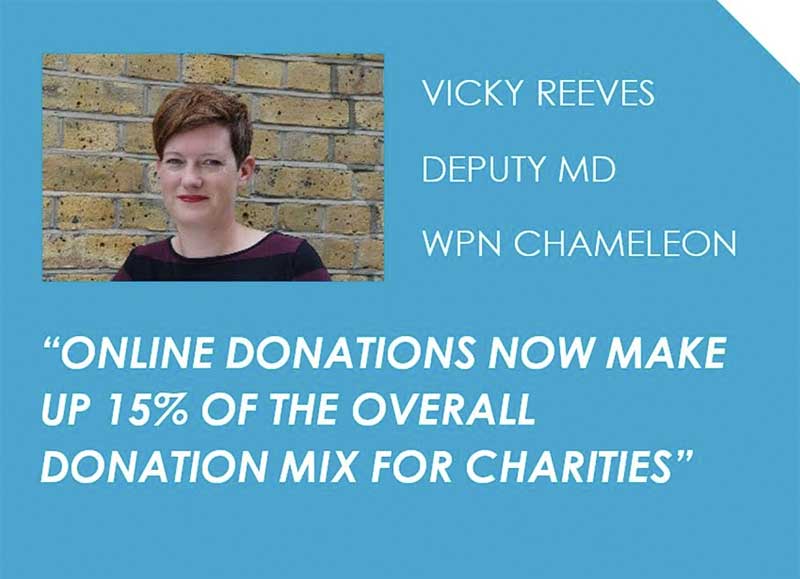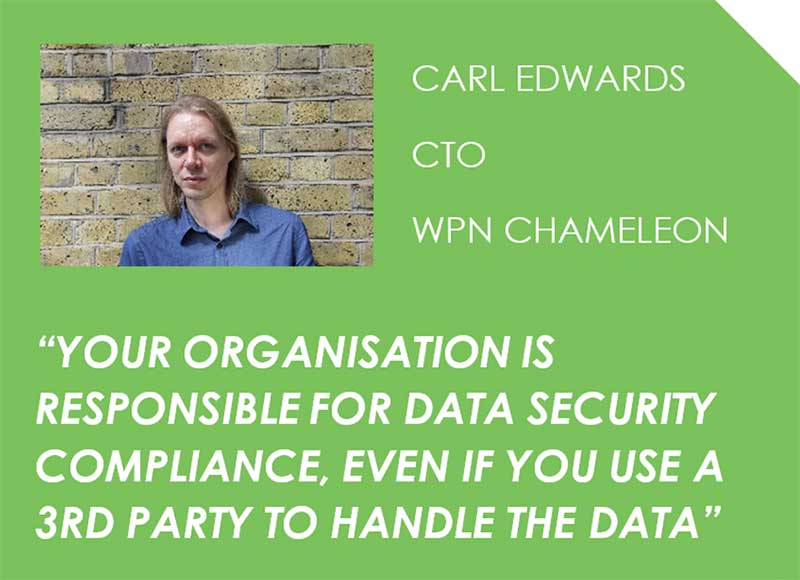A perfect storm in the charity digital payments market?
“We’re on the cusp of an e-commerce revolution”.
That was the view of WPN Chameleon’s Digital Solutions Architect, Louise Ryan, when summing up last week at our seminar ‘Growing income, protecting supporters’ which updated 27 major UK charities on the state of the market for taking payments online.
Why now though? And what’s changed?
Well, there’s a bit of a perfect storm going on, consisting of a market that’s maturing, technological innovation, and a dash of sector controversy added to the mix.
The move to taking payments online has been growing consistently, and as I pointed out in my opening statement, the charity sector is seeing this trend just as much as commercial organisations. In fact online donations have increased 100% since 2013 and now make up 15% of the donation mix for charities.
As this growth continues, security becomes more important, especially as unscrupulous people – hackers, phishing scammers and the like – seek to take advantage of the vast quantity of sensitive data that moves around the internet on a daily basis.
Your organisation has the ultimate responsibility…
“Any organisation taking card payments is responsible for data security compliance, even if you use a third party to handle and process the data” noted Carl Edwards, WPN Chameleon CTO.
“The best thing to do is avoid contact with sensitive data as much as you can – if you don’t touch it, your liability is less; if you don’t store it, no-one can steal it from you.”
But of course, taking online payments does mean that at some point sensitive data needs to change hands!
Many organisations may not know that PCI-DSS rules – the payment card industry’s data security standard for card payments – changed earlier in 2015. This means that all merchants must be compliant, or face potentially steep fines from their bank.
Advertisement
The supporter experience ‘trade-off’
There is always a trade-off between UX – user experience – implementation, cost, security and compliance” said Louise. “The exact balance of how you handle that mix comes down to your organisation and its circumstance.
Of course, all this change is happening in the wider context of public attention being focused on how charities ask people for money.
The clear message coming from the sector is that it wants to place donors’ needs at the heart of its communications and the overall experience of giving.
Sir Stuart Etherington of the NCVO said last week that “charities should take steps in order to put donors’ interests firmly at the heart of everything they do, including their fundraising”.
So, if what people want is a personalised, relevant supporter experience – the kind of experience they get when dealing with online retailers for instance – then offloading compliance gets in the way. Providers do offer plenty of ‘seamless’ options allowing charities to plan out the best supporter experience, but charities then need to take more of the compliance burden on the chin.
None of this news is bleak – quite the opposite.
There are now a multitude of options and combinations of how to take payments. And there are some providers who are more enlightened that others, reacting to market trends and designing their offerings around them.
In some cases, there is a move towards removing payment forms altogether. Platforms like PayPal, Stripe and Zapp (the Pay by Bank app launching in October) store their users’ details and so can process purchases or donations without any payment data being inputted. There are situations in which a donor can make a donation in two clicks without keying anything in. Surely these platforms designed to prioritise ease-of-use and cross-device experience will change the landscape of the online payments market significantly.
Think about what’s now… and next
As a result of all this, my final thoughts are to think about the current ways you take payments online. What kind of experience are you giving your supporters now? Are you compliant? And how well equipped are you for the future?
Vicky Reeves, WPN Chameleon






